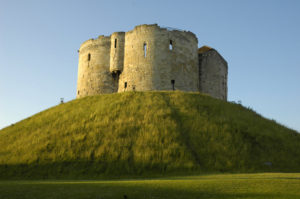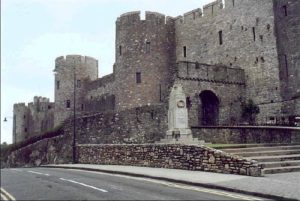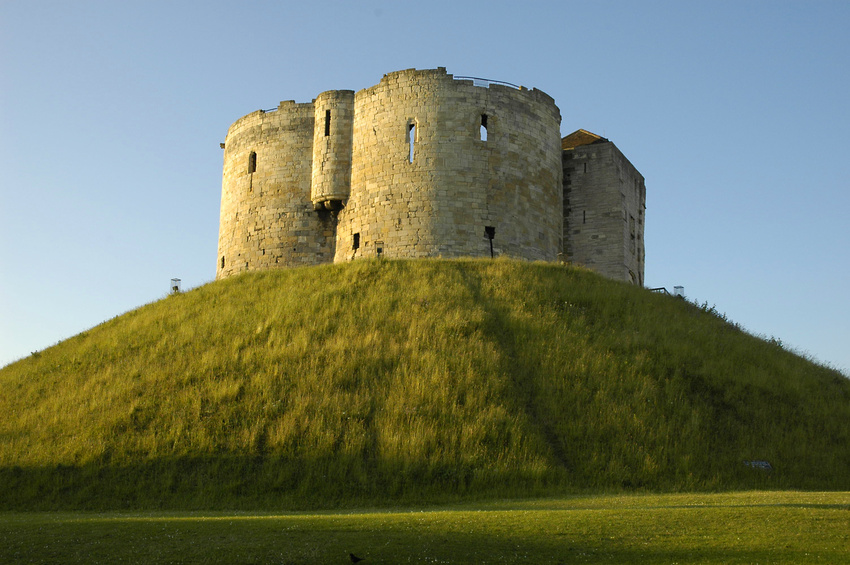
There were no existence of any sort of castles till the time when the Anglo Saxons ruled over England. After the Battle of Hastings which took place in 1066, where the Normans defeated the Anglo Saxons and took over England, William I the conqueror introduced the concept of building castles with bailey wood and motte wood.
This era started off from a scratch and went strong as over 1000 wooden castles of the same build was built over the period of time. William I the conqueror also could rule England in a better way through routing his activities from the wooden castles.
However, William I the conqueror built the wooden castles with a mindset that the castles will not be permanent ones due to a reason that in those times, wood used to get rotten very easily and thus the castles could be easily burnt or even destroyed by the enemies. Thus, to come out of this kind of a situation, William I the conqueror decided to build stone castles.
Emergence of Stone Castles
Contents

This was the time when the Norman stone castles in England started to be more popular and were being built in large numbers. Initially, the bailey castles and the Motte castles were being strongly fortified through the conversion of such wooden castles to stone castle.
The first development of a Norman castle in England was through the raising of the timber buildings on the walls of stone. Once this step was completed, the next step was to build the castle keep, that is, the tower of the castle entirely again with the use of the stones.
After completing all such necessary steps, in the medieval era, we saw the first Norman castle in England, which is the Tower of London (known to be famous even in the present days). The chief architect behind this famous castle bilt by William I the conqueror was Robert, who was the Lord of Belleme.
From the time of Norman invasion, that is 1066 to the year when William I the conqueror died, that is 1087, a total of 21 years of rule has been recorded in the history.
In these 21 years of rule by William I the conqueror, he built a total number of 86 castles which were made of stone. Even before that, when wooden castles existed, it is noted by historians that William I the conqueror built over 1000 castles which were made of wood.
Types of Stones used to build the Stone Castles
The Normans mostly made use of the old Roman bricks due to their strength and longibility for the constructions of stone castles. Another type of stones were also used widely which used to be mined in the quarries. Apart from these two types of popularly used materials, several other materials used to be used. They are hard chalk, limestone, flint and sandstone.

Purpose of building the Norman Stone Castles
William I the conqueror was a very wise king and thus he would have good intentions behind building the stone castles for the Norman empire. Thus, following mentioned are some of the purposes which William I the conqueror had behind building the stone castles:
- In order to act as a post which was fortified
- In order to keep the indigenous population frightened
- In order to provide a place of justice for the Normans
- In order to adjoin the rivers
- In order to provide a place where the men and the horses used to be housed
- In order to overlook the entire town and keep an eye on enemy attacks, if any, from long ranges
How did castles help the Normans control England?
The Normans when compared to the Anglo Saxons were advanced in military forces. The Normans also made wide use of horses. Considering the main aspects of the Normans, likely, the military forces, the approach of rule of the king, etc. the Normans required a central place of operation.
Here the castles built by the Normans came to play. We have read about how the Normans evolved from building wooden castles, which were fragile to the enemies to the stone castles which were strong enough to hold the enemies.

These stone castles were of two structural types. The first is the tower shaped castles and the second were the round shaped castles. These structural designs were not for looks or beauty of the castle but for a specific purpose.
The tower shaped castles not only helped the Normans to have an eye on the approaching enemy but also to keep an eye at the entire area. From spotting regions of immediate attention to keeping eyes always on enemies. Since the shape was that of a tower, the heights of the towers were generally quite tall. Thus, one could easily keep an eye of a specific radius from the top of the tower.
The round shaped castles were another type to help the Normans. The round shaped castles also gave many solutions to the short comings of the tower shaped castle. For example, a critical situation of concern in a very small region within England may not come up or be noticeable in the view from the top of the tower.
In such scenarios, those topic of concerns could be placed in front of the king. Having a round shaped structure, the surface area of these castles were generally larger than those of the tower shaped. Thus, these castles used to house larger number of people.
Coming to the vastly advanced and strong military forces of Normans, they required equally big amount of space for training, housing of weapons, accommodation of army officers, accommodation of horses, etc. these would also be inside castles built by the Normans due to the security reasons.
These are some of the basic reasons illustrating how did castles help the Normans control England? Keeping an eye on the country, pre-determining enemies and studying their style of approach practically from before, catering to the needs of the people of the country, housing, training and development of military forces and many other activities make up the base of controlling a country. The existence of the Norman castles made it easier for each and every aspect of controlling a country.
Here is a list of Normal castles in England
Alnwick Castle
Appleby Castle
Arundel Castle
Barnard Castle
Bedford Castle
Bellister Castle
Berkeley Castle
Berkhamstead Castle
Biggleswade Castle
Bolsover Castle
Bramber Castle
Brough Castle
Bywell Castle
Cainhoe Castle
Canterbury Castle
Carlisle Castle
Cartington Castle
Castle Acre
Castle Howe
Castle Rising
Chalgrave Castle
Chester Castle
Christchurch Castle
Clare Castle
Clifford Castle
Clun Castle
Colchester Castle
Corfe Castle
Dane John Mound
Deddington Castle
Devizes Castle
Dover Castle
Duffield Castle
Durham Castle
Egremont Castle
Elsdon Castle
Eynesford Castle
Farnham Castle
Framlingham Castle
Gloucester Castle
Hastings Castle
Hedingham Castle
Helmsley Castle
Kenilworth Castle
Kimbolton Castle
Launceston Castle
Leeds Castle
Lewes Castle
Lincoln Castle
Longtown Castle
Ludgershall Castle
Ludlow Castle
Lydford Castle
Morpeth Castle
Norham Castle
Norwich Castle
Odell Castle
Okehampton Castle
Old Sarum Castle
Oxford Castle
Pevensey Castle
Peveril Castle
Pickering Castle
Pontefract Castle
Portchester Castle
Prudhoe Castle
Rayleigh Castle
Restormel Castle
Rochester Castle
Rockingham Castle
Rufus Castle
Sandal Castle
Sherborne Old Castle
Shrewsbury Castle
Skipsea Castle
Skipton Castle
St Briavel’s Castle
Sutton Valence Castle
Thetford Castle
Tonbridge Castle
Totnes Castle
Towcester Castle
The Tower of London
Tutbury Castle
Wallingford Castle
Wark Castle
Warkworth Castle
Warwick Castle
Weeting Castle
Wigmore Castle
Wilton Castle
Winchester Castle
Windsor Castle
Wolvesey Castle
Yielden Castle

